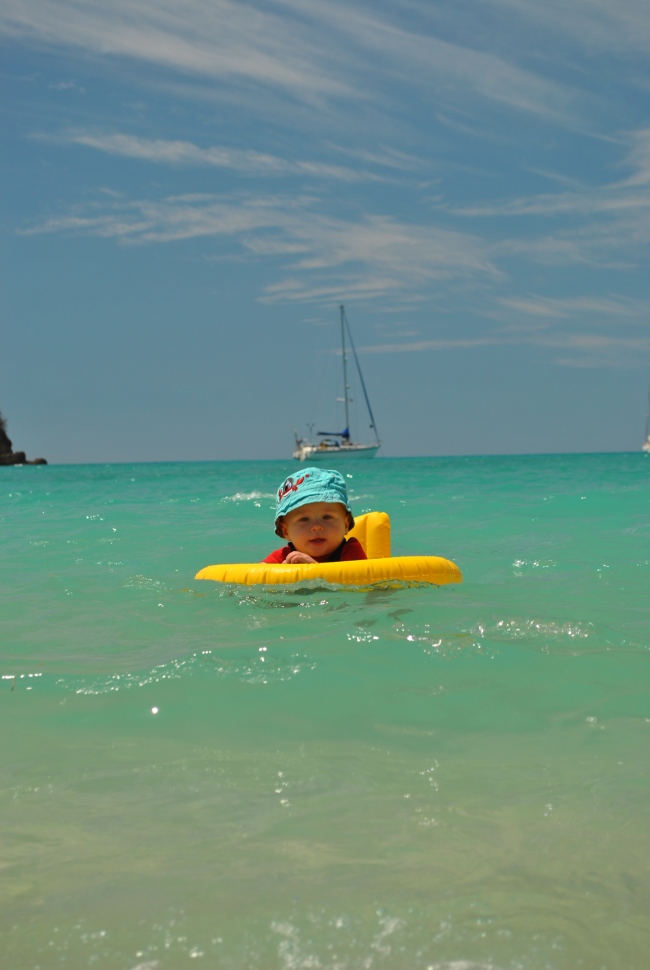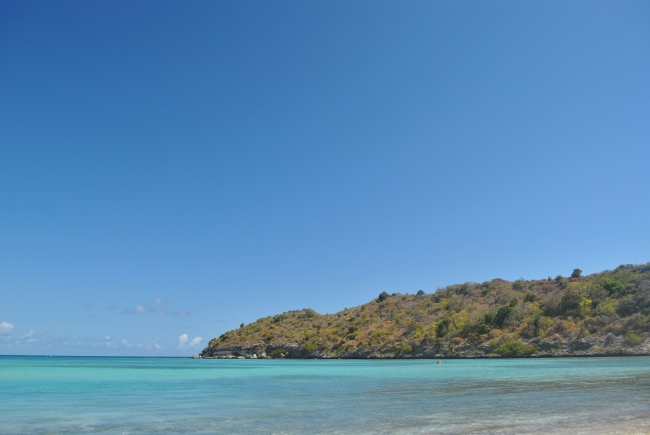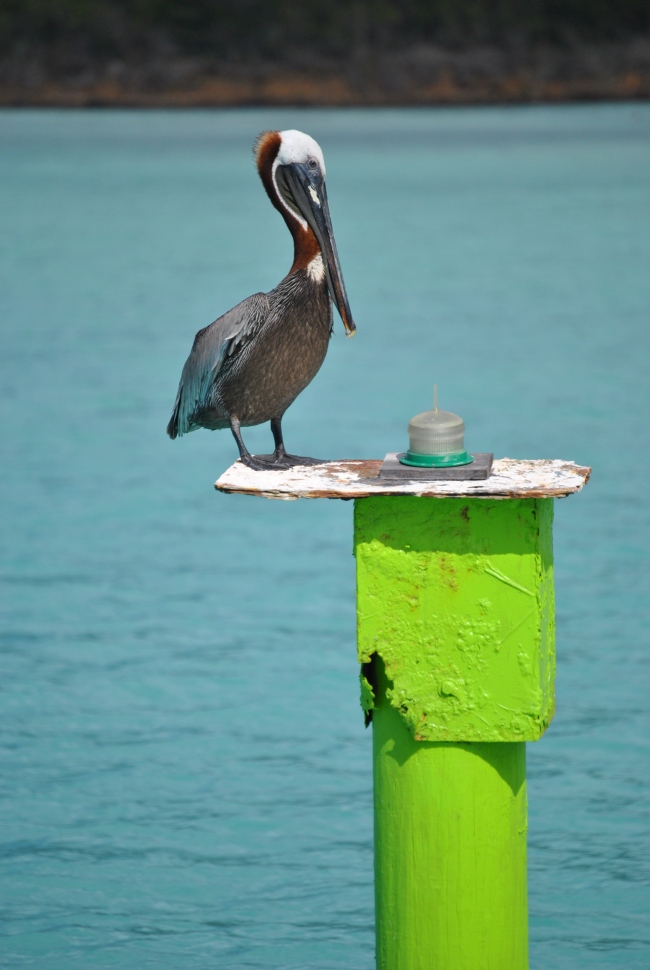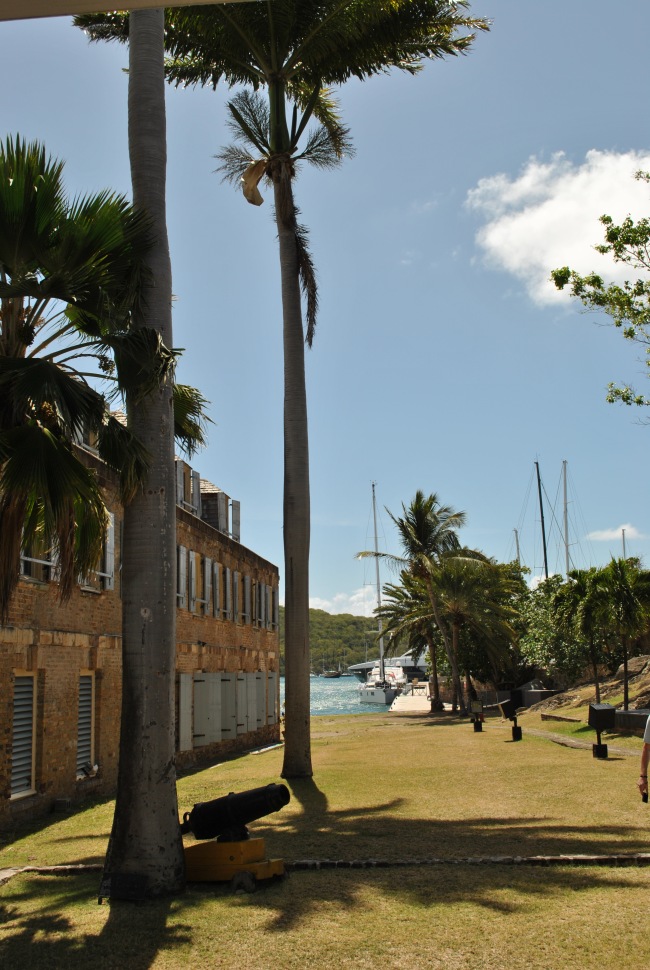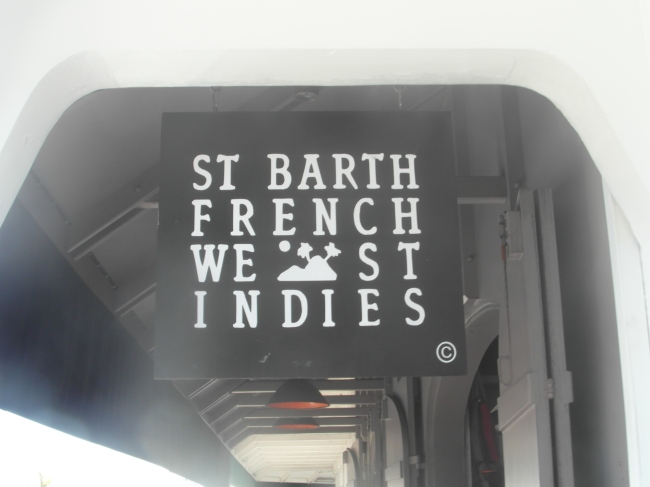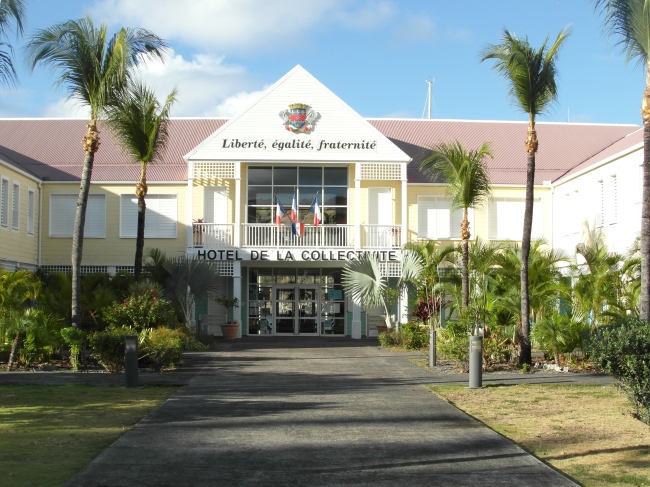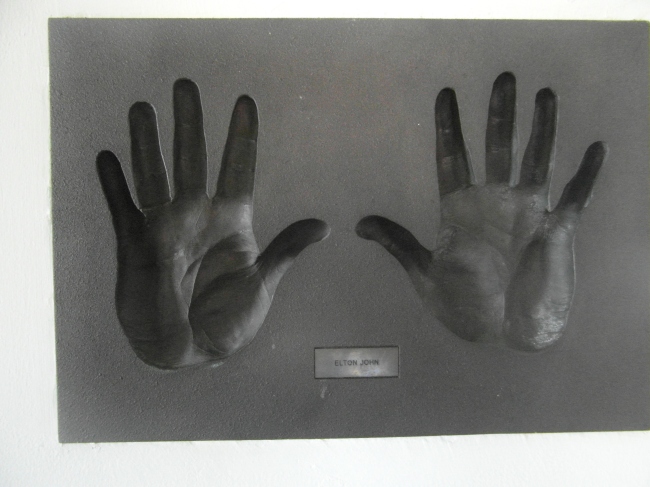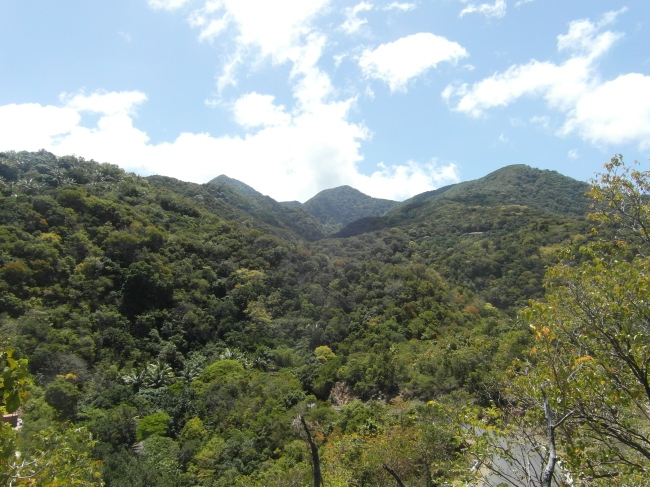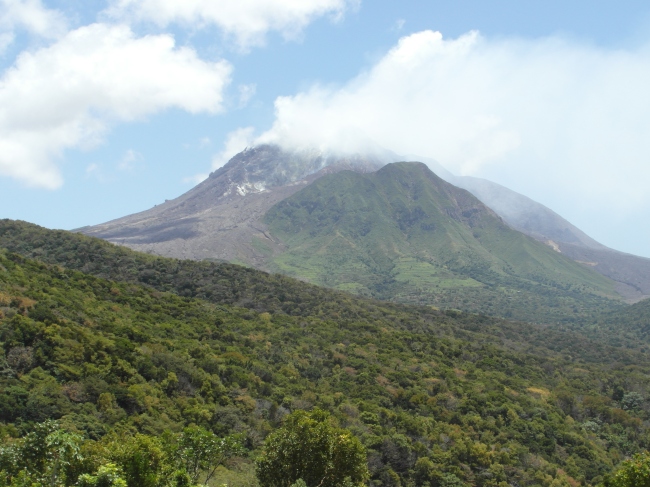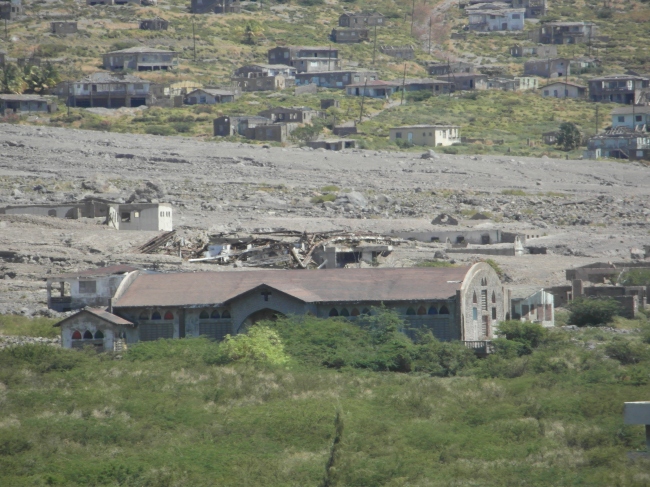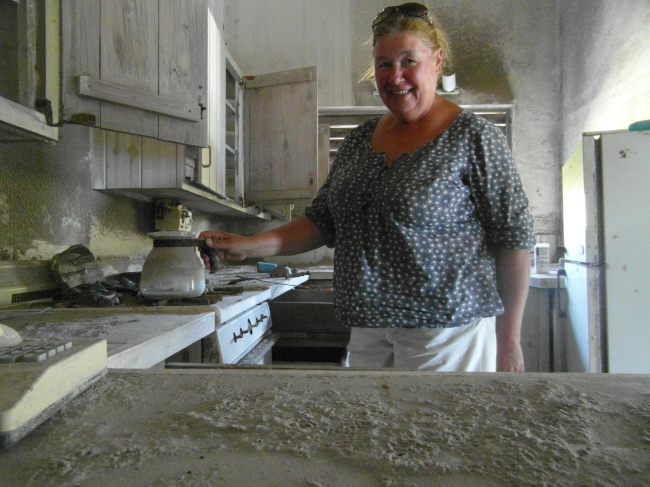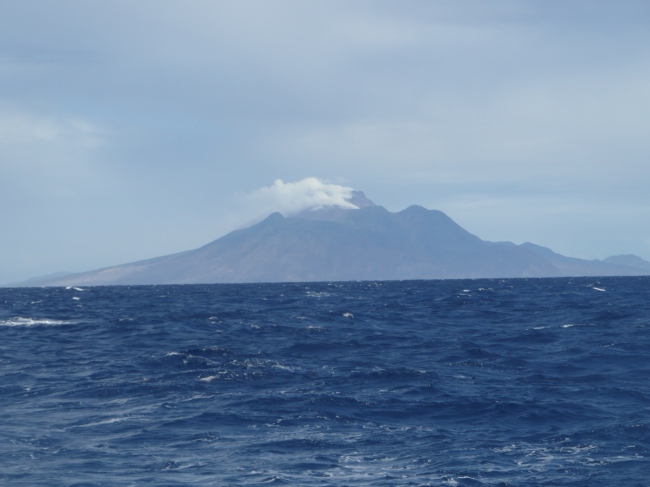Much as it is difficult to write about the there and then from the distance of the here and now ( I write this from Dominica) we think that a bit of retrospection helps to assimilate our sometimes quite diverse impressions of a place into a homogenous mass which may then be worth reporting on to you dear Reader. Each of these islands is so different in its culture and history that it is almost a travesty to call them just The Caribbean Islands. As Europeans we should be all too sensitive about blanket labelling which does nothing to vive la difference! If nothing else I hope to be able to get past the labels and help you to see as we have the distinct variety each place offers….and of course a flavour of the sails we do between them.
We left French St. Martin in the full knowledge that we were not done with France yet. Only fifteen miles away was St Barts (actually its pedigree name is St. Barthelemy which somehow suits its grand opinion of itself better – one gets the immediate impression that too much familiarity would not be tolerated from the likes of us by the local bourgeois). It is only a small island – about 5 miles long but small in economic and social stature it certainly is not. Gustavia, the main town is a delightful, protected sea port overlooked by red-roofed houses and sumptuous pastel-coloured villas and a massive fortress. The port is nearly entirely given up these days to yachts of all sizes but mostly of the massive variety. The maximum length of yacht docking in the little port itself is a mere 60 metres which apparently meant Bill Gates’ somewhat larger superyacht recently had to be turned away and he was thus forced to anchor outside the harbour with the likes of us. Poor Bill! Outside the harbour hundreds (literally) of yachts put down their hooks and go ashore by either their humble dinghy or over-powered motor launch. St. Barts is definitely THE place to see and be seen in superyacht circles. The duty free shopping in the streets surrounding the harbour ensures you can get in contact with your Dior side at multiple glitzy outlets. Promenading around the harbour boardwalk is in itself an experience which ensures you feel both impoverished and seriously under-dressed. French chic is everywhere. It is obviously known to be so in French circles as every fancy shopping bag is emblazoned with ‘ St. Barth ‘….just to prove you have actually been there. Of course, alongside all the glamorous shops and boutiques are the art galleries and restaurants but these too are not for the euro-challenged tourist. You can imagine how much Colin appreciated this environment…..definitely not in his natural habitat, so having walked the board-walk and shopped in the supermarket (which was causing much displeasure to their affluent customers on the day we were there as they were unable to take payment cards – only cash…quelle horreure!) it was time to tackle the clearing out procedure which was self-service on a French computer (“…..um, do you have any qwerty keyboards?”…..reponse…. “Qwerty? What is this?”..me “an English keyboard”…..reply…”non, vous etes en France maintenant”….) in the plush marina office and depart.
It is true to say that the brevity of our St. Barts visit was not altogether due to our feelings of not belonging there but also because of our impatience to get to Antigua. Here we were shortly due to meet youngest son Matt and his wife Kim and our youngest Grandson, Geoffrey (Geoffers to his friends!) and thus we excitedly sailed into Jolly Harbour Bay and put down our anchor after a very long day sail of about 75 miles. The next day we motored into the marina itself which is a large sophisticated marina and apartment complex with every type of amenity imaginable and managed to find the customs and immigration office which unusually one could temporarily tie up to on a pontoon right outside. What a relief it was to be back in an English-speaking and feeling environment again! The officials were very patient as we tried out their new computer check-in system of which they were very proud (on a qwerty keyboard of course…but they also had French ones should they be required…spot la difference?). Legal once again we went into the marina proper and asked for a berth. Once we ascertained that a berth alongside a strip of concrete was going to cost us double (yes, double!) what it would be if we moored stern-to we decided on the latter and joined the happy masses in the cheap seats. We then set-to cleaning and re-provisioning ready to be joined by our darlings and on the appointed day rented a car to take us to the airport to collect them. At this juncture I will gloss over the ineptitude of the supposedly doting grandmother…suffice it to say that it was such an unlikely circumstance that bought two flights from London within an hour of each other ensuring that mistakes could indeed be made concerning which one you are supposed to be meeting – thus leaving your unmet, jet-lagged Beloveds waiting alone in a strange airport for 30 minutes or so. Perish the thought…..we found each other eventually and back to Jolly Harbour we jolly well went!
Then the exploration of the island began in earnest. Antigua is about 20 miles wide and 10 long much of which is surrounded by reefs which protect many little indented bays and harbours. It was British for over 300 years until it gained independence in 1981, but there is no doubting its original identity. After the buzz of the marina which was hot and airless we broke free and much to the consternation of our awed guests, headed out into the azure seas and south to the next bay, aptly called Deep Bay. It was here that just-one-year-old Geoffers first met Dinghy and, as with his cousin Tommy a few months before, it was love at first sight! (well, providing a Mummy or Daddy was nearby that is). Lazy days anchored in bays and motoring to the beach in the dinghy for swims and snorkelling was just what the tired young, hard-working parents required and Antigua was the perfect place to deliver just that. Before abandoning ourselves totally to the hidden treasures which awaited us behind the navigationally challenging coral reefs, we thought we ought to pay a visit to the capital of Antigua, St Johns. We tentatively sailed in and saw a huge cruise ship already tied up to its vast mooring and we crept alongside it wondering where a little Resolute could find a space. A chap who had been sitting minding his own business on the rather decrepit wooden pontoon jumped up and waved at us to come alongside there so, bereft of any other ideas and carefully avoiding all the sticky-out rusty nails and broken shards along the pontoon, said chap gleefully took our lines and helped us to settle. Mr Helpful introduced himself to us as Joseph whilst assuring us we could stay just there and he would look after us……for a small amount of dollars. The deal was struck without us having any idea on whose authority he was granting us this permission, but dear Joseph was soon ushering us off Resolute and directing us to the best spots in town all the while promising us he would mind the boat. With a few backward glances we set off into the town and by ‘town’ I mean behind the usual façade with which we had now become accustomed which exists purely for the cruise ship tourists. Unfortunately, though attractively restored in places, colourful and bustling, it delivered little in the way of fresh produce and Geoffers found the heat and noise difficult so after a wander we headed back to the boat where Joseph greeted us and baby slept. Filled with intrepid spirit, Matt and Skipper decided to head off on the bus to a nearby supermarket. Everyone getting on and off the bus (no other white faces to be seen) courteously bade ‘Good Afternoon’ to their fellow passengers and helpfully advised the strangers about the supermarket which the Intrepids found to be absolutely first rate and provided everything required. They then trudged hotly back on the bus to their awaiting maidens who were proud of their hunter-gatherer efforts.
After another hot, airless night, fond farewells were said to Joseph as he helped us untie our lines ready to leave the next morning. Avoiding a collision with the two enormous cruise ships on their way in to St Johns we headed out anxious to find some splendid isolation once more. We found exactly what we were looking for at Great Bird Island which is in the north-east of the island and through a narrow channel in the coral reef….an entrance not for the faint-hearted but one which ensured that few others ventured in. Tucked in between the islets and the rocks we found a perfect spot from where we could dinghy easily to the quintessential powdery sand and palm-treed stretch of beach which was only rarely frequented by small boat loads of tourists who came from neighbouring Long Island resort. Several days were spent here. Geoffers adored being in the water as did we and whilst he napped in his pushchair in a shady corner we took if in turns to explore the little island on foot including the path to the top for a panoramic view of the bay. Cheekily, after all the tourists had left for the day, we used the embers of their BBQ to cook our own supper, whilst Matt had a beer in his hammock on the beach and Kim took some wonderful photos of the wildlife. (The green tree lizard gave her quite a shock as it peered over her shoulder camouflaged by the green branch on which it stood). With much of the island still to see and days running out with heavy hearts we sailed south back round the island and after a few supply stops headed for the massive Falmouth Harbour which is part of the Nelson’s Dockyard National Park. The Park is the yachting capital of Antigua and is a major Caribbean yachting centre which attracts hundreds of cruising yachts and those participating in the Regattas which attract global attention. Superyachts abound along the dockside but diminutive Resolute picked up a mooring buoy in huge Falmouth Bay. Apart from wanting to visit such a distinctly historic British part of the Caribbean, we also wanted to take a rare opportunity to visit Gill’s cousin Ray and his wife Marilyn who run their business near Nelson’s Dockyard and live just outside Falmouth. Our meeting with them arranged for a few days hence, we set off to explore the town of Falmouth whose livelihood survives on yachting services but it also has a convivial social scene with every flavour of restaurant and cocktail bar. But all of this was clothed in distinct Caribbean-ness; slightly shabby, alfresco, happy-go-luckiness which is not given to the self-conscious intensity of the French islands. The Nelson’s Dockyard area which joins Falmouth by a little spit of land is a different story altogether. Given its ideally sheltered and secure position the Dockyard was completed in 1784. In later years Nelson was the naval commander there. When a former naval commander Vernon Nicholson sailed into English Harbour in 1947 the entire place was in ruins. Nicholson restored the ruins and set up a charter company in English Harbour and today the whole site is run as a national park with many of the historic buildings housing restaurants and hotels and also a fascinating museum housing endless artefacts from Nelson’s era. It was amazing to wander past the bakery and the Officer’s Quarters to think of so many British naval bods being based there so far away from home. If our voyage seemed epic and at times we feel so remote from our Motherland and kin how much more so would it have been for them?
It was wonderful to meet up with Ray and Marilyn and to see their successful business – The Anchorage – a beautiful courtyarded haven with guest rooms and services mainly geared at the yachting crews which gather for the multiple regattas Antigua hosts. Other parts of the site are given over to offices hired out to businesses. All in all it keeps them busy and they are relieved to go home to their little pond-side refuge on the other side of Falmouth Bay at the end of the day. Once Matt, Kim and Geoffers left us to return home, we were very privileged to be invited to share an evening with Ray and Marilyn in their gorgeous hideaway. It was the perfect antidote to what had been a traumatic and emotional farewell.
After much licking of our wounds we felt it was time to move on. Across the water the volcanic peak of Montserrat beckoned to us. We had promised the island we would return to it and give it some rightful attention when we passed it going north back in January. You may remember that then I recounted how in 1995 the Soufriere Volcano erupted which decimated half the island including the capital, Plymouth. Thankfully few people were killed (and apparently those who died had refused to leave their homes or had returned to them after the evacuation) but thousands were made homeless. Before the eruptions the island sustained a population of 11,000. Today it is just over 5,000. With such an important tale to tell a visit to Montserrat was a must, but as there is only one viable anchorage which is only tenable in light easterly winds we checked the weather, phoned their helpful advice line to confirm our positive findings and set sail. A beam reach saw us across in no time (well about 7 hours to do the 42 nautical miles) and sure enough Little Bay was as still as a millpond. The next day saw us heading ashore to clear-in and almost as soon as we came out of the Customs and Immigration Office we were accosted by Thomas who asked us if we would like a tour of the island. Of course we did….and what a tour it was. Thinking back it was as if we were taken to two different places entirely: one was lush and verdant with layer upon folded layer of different shades of green vegetation reaching to a blue sky, the other a grey wasteland overseen by the still steaming craggy peak of the Soufriere Volcano. Thomas was a wonderful tour guide and with him we were almost able to access all areas…despite restricted zones being in force as the volcano is still very active. Little Bay, he explained, was to be their new capital and the abundance of construction work in the area proved that much was underway – albeit at Caribbean pace – including a marina and cruise ship terminal. We stopped outside a very imposing colonnaded hillside building which Thomas proudly announced was their community hall built for them by the stars. Sorry? We looked bewildered so he continued that there had since the sixties been a recording studio on the island –Air Studios – owned by Sir George Martin and frequented by the likes of Elton John, Paul Macartney, Eric Clapton, Sting, Phil Collins et al. When they heard of the devastation caused by the volcano they gave a concert in aid of the community et voila! (Sorry, wrong language!) inside there were bronze hand impressions of all the stars who had contributed and I can vouch for the fact that Elton’s hands are smaller than mine! A wonderful building and a wonderful gesture. Later he took us to the eerily deserted studios themselves and to the holiday home of Sir George Martin himself which, when he is not in residence, is run as a small but exclusive guest house and restaurant – Olveston House (I personally have that one on my wish-list of places to which I would love to return should I win the lottery). The photographs which adorn the walls at Olveston are nonchalantly signed by a Linda Macartney no less.
From the green river valleys and the winding lanes dotted with colourful houses and villas with their gardens spilling over with bold pinks and reds we climbed up to the stark white building which houses the Volcano Observation Centre. The peak of the mountain and the steaming volcano stared back at us from the observation platform. With the volcano still very active this place meant business. Inside we were able to watch a video of the lead up to the eruption itself…..footage of an ordinary bustling period in the life of the capital Plymouth juxtaposed with pictures of the spewing lava plugs and the sulphurous fumes which caused previously untroubled faces to look anxiously upwards and mouths and noses to be covered. Then came the announcements to evacuate. At this point in the video we were joined by Thomas who, being 73, was able to put his own spin on the story as it unfolded. If we needed something to make the whole thing more personal Thomas was it. His childhood home and town of St Patrick had been completely covered in lava and no longer existed at all. He himself had been taxi-ing frightened people to the airports and ports at the time of the eruptions and had helped at the makeshift centres to house the suddenly homeless. It was all very real. Afterwards he took us through the barriers and into the restricted zones. Each zone was categorised according to the level of danger from any volcanic activity but he was able to take us into the Category B zone which was open if there was no imminent threat but in the daytime only. It was a depressing sight. Everything is covered in a dusty monotone grey ash. Grand and humble homes and businesses alike were deserted shells and the roads were mere grey tracks between them. Thomas said we were lucky on the day we chose for our tour because the sky was blue and clear and there were none of the acrid fumes which often prevented him from bringing travellers into this zone. We were able to go inside a deserted home – once a stunning patio and veranda overlooking Plymouth harbour. The former occupants had obviously left in a serious hurry as the kitchen was still full of the detritus of normal living – a coffee pot on the stove and a saucepan in the sink, the beds unmade in the bedrooms and the books still on the shelves and all covered with the thick, grey ash. The whole place and all around eerily quiet…no sounds of life at all. Another planet. Thomas explained that only recently had he been allowed to come into this zone at all…only recently had it been deemed safe enough for daytime visits and tomorrow all that could change if the volcano decided to utter. We felt horrified by it all but privileged and humbled at the same time to have had the opportunity to bear witness to the aftermath of such a catastrophic event at close quarters. But I should stress here that Thomas’s incredible tour was not down-beat or down-trodden in any sense. Somewhat shell-shocked by the whole landscape he drove us back through what had been the golf course and was now an ash processing plant, the ash being one of the island’s few exports. With some relief we came back into the safe zones and everything was green and lush again and seemingly miraculously normal life was in progress. Thomas tooted at everyone he knew as we went along and they happily tooted back (he seemed to know everyone!). He explained how the islanders were looking forward to a bright future with the good humour which was so evident …most of them having lost everything but being determined to stay in their beautiful homeland.
We stayed a few more days anchored in Little Bay and dinghying ashore to the small town for cocktails, the internet and other essentials. We were left with the compelling impression that in the face of adversity this little island and its wonderfully welcoming people could pick themselves up and literally dust themselves off and start all over again. We felt there should be a sign as you enter saying ‘No Victims Tolerated Here’.